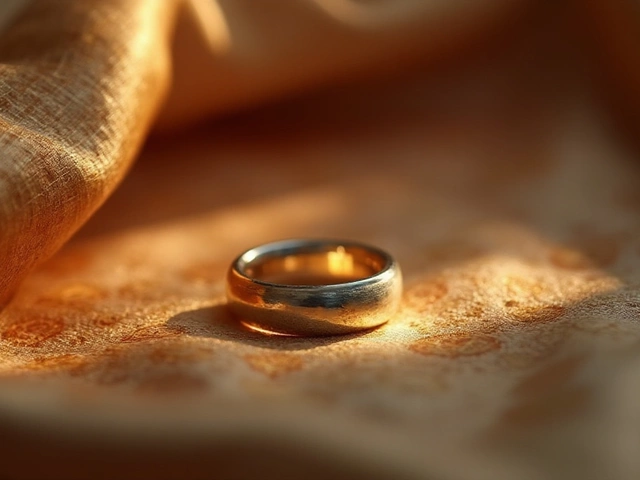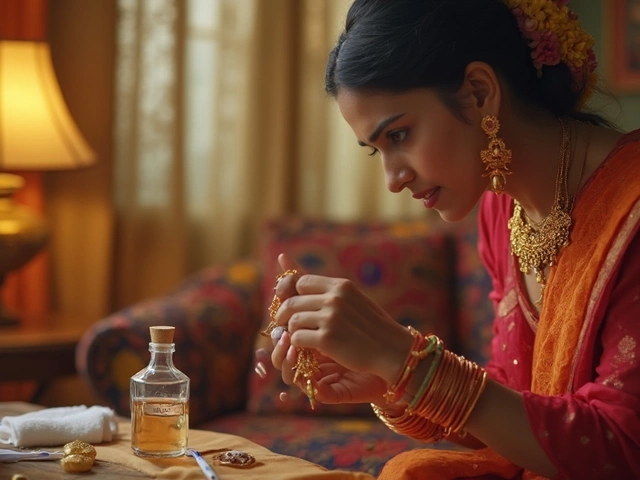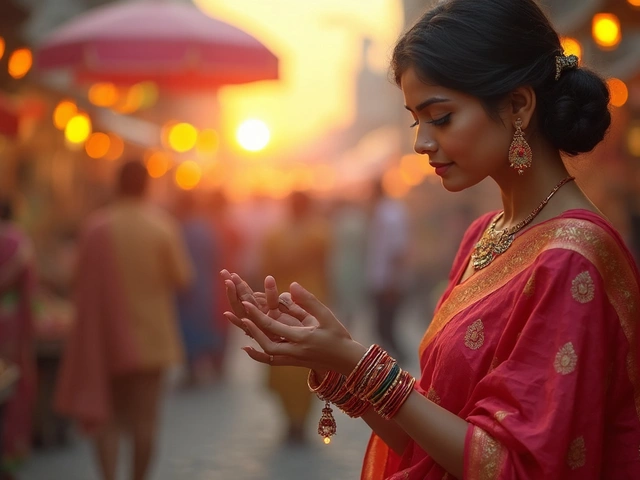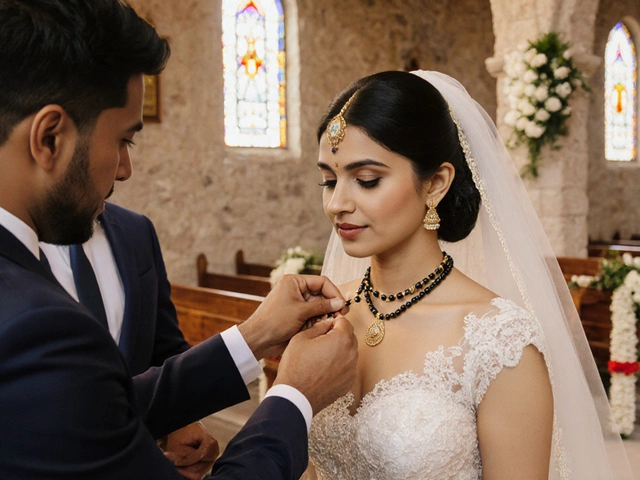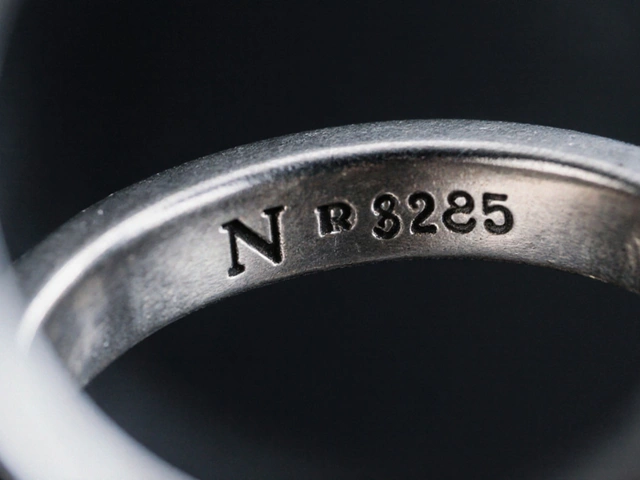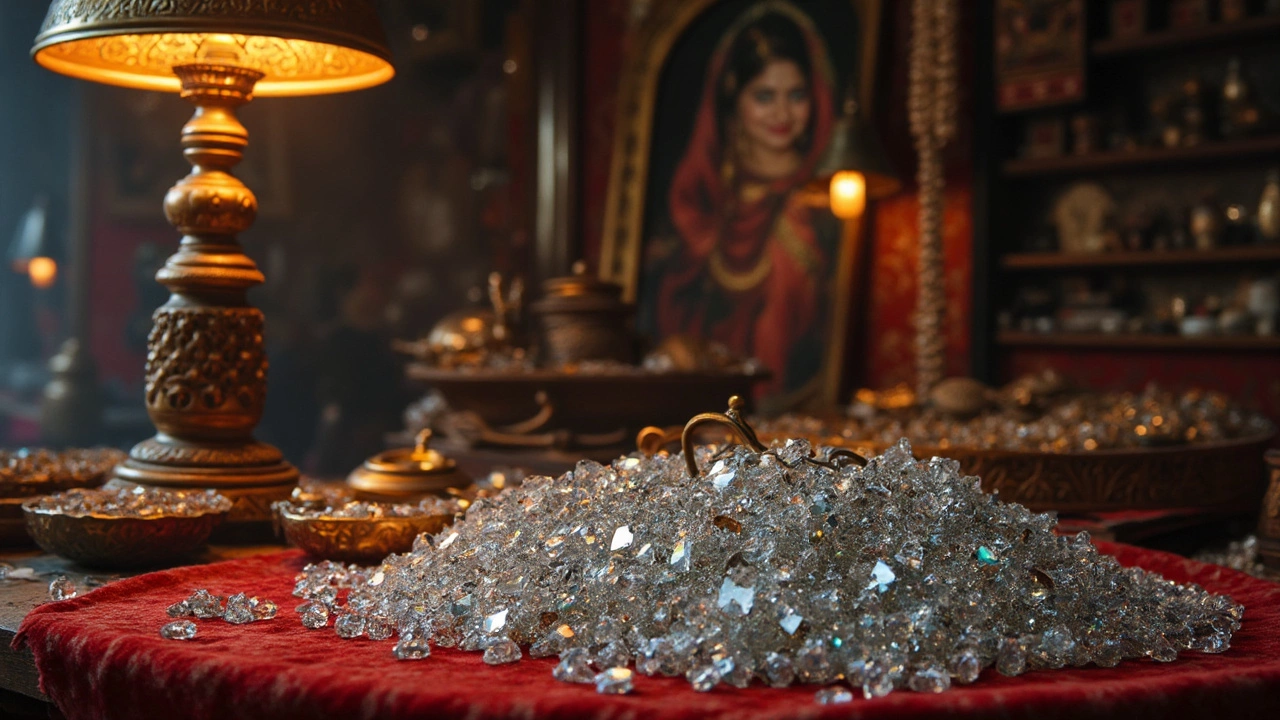
Diamonds might be forever, but in India, some come with stories you seriously don’t want tagging along. The idea of a ‘cursed’ diamond isn’t just Hollywood hype—it pops up in real Indian history, wrapped around power, greed, and lots of bad luck. People still whisper about certain gems bringing ruin to whoever owns them.
So, what’s actually true and what’s just a spooky story to keep people talking? It turns out, some of the world’s most talked-about ‘cursed’ diamonds really did pass through Indian hands centuries ago, causing enough trouble to make you think twice before slipping one on your finger.
- Origin Stories: Where the Curse Began
- Famous Cursed Diamonds in India
- What Went Wrong: Owners and Strange Events
- Experts Weigh In: Science vs. Folklore
- Buying Diamonds in India: What to Know
- Tips for Choosing the Right Diamond Ring
Origin Stories: Where the Curse Began
Let’s get right to where this “cursed diamond India” mythology took off: the ancient diamond mines of Golconda, in present-day Telangana. These mines coughed up some of the world’s most famous and expensive diamonds, and for a long time, only local royalty or powerful European traders would get their hands on them. The original ‘curse’ stories are usually linked to these stones being stolen, handed over in wars, or looted in invasions. People believed that diamonds taken in violence or by betrayal somehow carried the negative vibes of those actions.
Take the infamous Hope Diamond. Most historians agree it was originally part of a much larger stone from Golconda—a place that really did shape the global reputation for high-value gem finds. Legend has it a temple idol’s eye was ripped out and turned into the diamond, dooming its owners. Truth is, there’s no real evidence for the temple story, but the myth stuck. For centuries, folks talked about the string of bad luck trailing the gem’s wealthy owners and collectors.
It wasn’t only the Hope. The Koh-i-Noor and the Regent Diamond, both also linked to Golconda, had similar ‘curse’ stories. Royal families swapped these stones after bloody wars, betrayals, and sudden deaths, feeding the belief that these famous Indian diamonds held bad juju.
If you think this stuff never influences buying, think again. Indian traders often threw in a little piece of turquoise or iron with big diamond sales, just for ‘protection’—a habit that still pops up in parts of the country.
So, when you hear wild diamond superstitions or stories about cursed stones in India, remember these ideas started way back when diamonds and danger basically went hand-in-hand.
Famous Cursed Diamonds in India
Ask anyone about a cursed diamond in India, and you'll hear about the Koh-i-Noor. This diamond's reputation for bringing bad luck is almost as legendary as its sparkle. It changed hands over centuries, moving from Mughal emperors to Persian kings, and then to the British crown. Every time its ownership switched, wars broke out or royal families fell. Even Queen Victoria's family avoided actually wearing the diamond after it was gifted to her.
There's also the Hope Diamond, which started out as part of a bigger blue diamond found in India in the 1600s. It's now in the Smithsonian, but before that, owners lost fortunes, sanity, and even their lives. If you believe the stories, it’s not a stone you’d want riding around in your pocket.
Another one to look at — the Regent Diamond. It was discovered in an Indian mine by a slave, who ended up murdered. Later, it was worn by Louis XV and Napoleon, who both had pretty rough endings. No one in India wanted to keep it for long, and for good reason.
“Every famous diamond seems to come with a trail of tragedy, but it’s the Indian gems that started the whole cursed diamond myth,” said noted gemologist Dr. Anjali Mehta in an interview with The Times of India.
Just to give you an idea of what happened after people got hold of these stones:
- Koh-i-Noor: Taken from India, brought to England, kings avoid wearing it, rumors say it brings disaster if a man owns it.
- Hope Diamond: Linked to suicides, bankruptcy, and murder through three centuries.
- Regent Diamond: Found in India, associated with betrayal and downfall in France.
Most of the eerie stories are tough to prove. But the pattern of accidents and misfortune is enough to keep people talking about cursed diamonds in India even now. That’s why a lot of folks shopping for diamond rings in India double-check the backstory first—just in case luck is actually catching.
What Went Wrong: Owners and Strange Events
If you dig into the history of cursed diamond India legends, the stories often go way beyond simple bad luck. The most famous is the Koh-i-Noor diamond, which came out of India and straight into a trail of violence and lost thrones. Every time someone powerful got their hands on it, things seemed to go sideways. Persian King Nadir Shah took it in 1739—soon after, he was assassinated. It passed to Afghan rulers and Maharajas, almost always ending with someone getting betrayed, dethroned, or even killed. The British took it in the 1800s, and after that, British royalty decided only women should wear it—guess they didn’t want to risk more drama.
The Hope Diamond is another one with a wild rep. It supposedly started as part of a big blue rough diamond found in Golconda, India. The first owner to bring it to Europe, a French gem merchant named Jean-Baptiste Tavernier, ended up supposedly getting torn apart by wolves (talk about over the top). Later owners included Marie Antoinette and King Louis XVI—both famously lost their heads. American owners didn’t fare much better, running into bankruptcy and scandals. Now it sits in the Smithsonian, in a glass case, messing with nobody (we hope).
It’s not just the super famous stones. Some smaller Indian gems picked up a bad reputation because folks who bought them reported sudden health problems, freak accidents, or losing their fortune. Sometimes these stories were used by jealous rivals—other times it was just a way to explain a string of bad luck, but they definitely helped feed the whole cursed diamond thing.
- Famous diamonds like Koh-i-Noor and Hope Diamond triggered real messes: stolen thrones, mysterious deaths, lost fortunes.
- Plenty of other so-called cursed stones in India got their reputation after sudden tragedies in their owner's lives.
- Stories often got more dramatic as they were retold, but they usually start with a real event or disaster.
Think about this next time you spot a shiny diamond ring in India: some gems have wild backstories, but most are just beautiful rocks. If you hear a curse story, there's usually a mix of facts and some serious exaggeration.
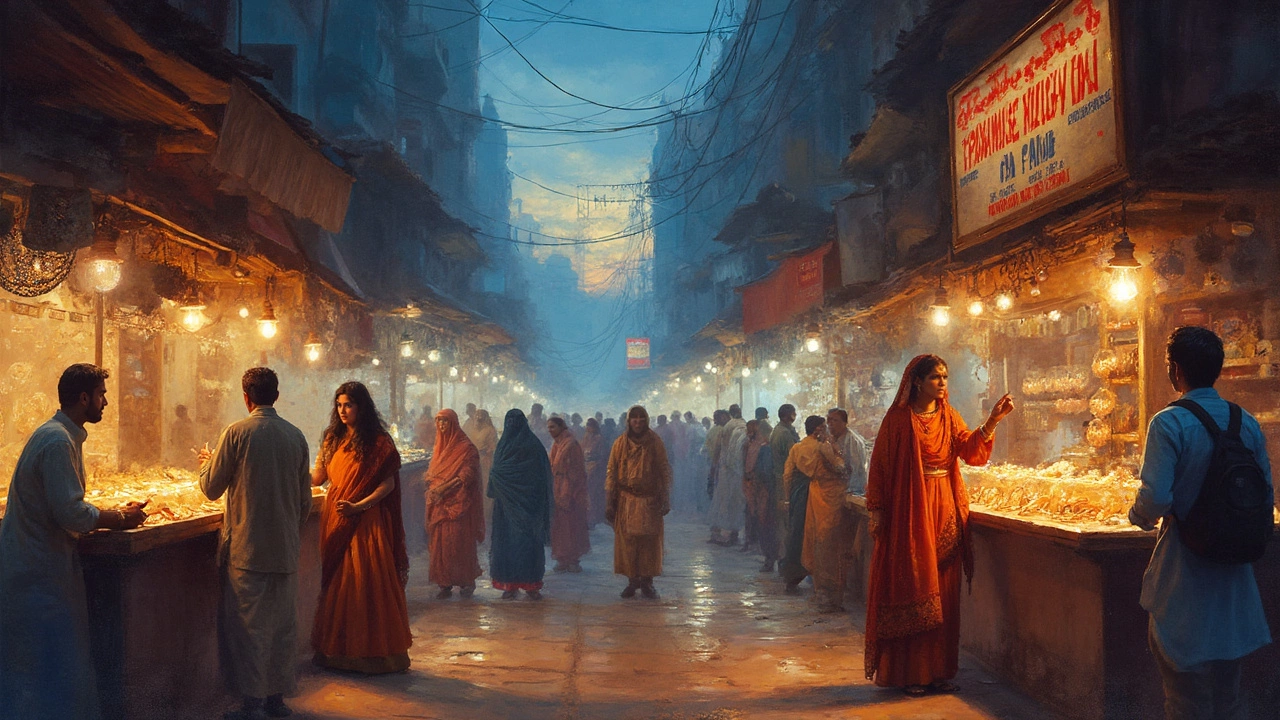
Experts Weigh In: Science vs. Folklore
Every time a story about a cursed diamond India makes the rounds, experts step up to set things straight. Most gemologists, historians, and even psychologists agree: there’s nothing about a chunk of carbon that dooms your life. The drama behind these diamonds often comes from what people believe, not what's actually happening inside the stone.
For example, the legendary Hope Diamond, which came from India, changed hands a bunch of times. Bad stuff happened to some owners—financial ruin, accidents, the works. But science says that’s just a string of really bad coincidences. There's no evidence the diamond itself had anything to do with those events. It’s just easy to connect the dots after things go wrong, especially when a famous Indian diamond is involved.
The Gemological Institute of America (GIA) did a deep dive into "mystical diamonds," and they found zero physical traits that make one diamond luckier or unluckier than another. Realistically, every diamond—whether it’s used in diamond rings India or sits in a museum—forms the same way under earth’s crust. No curses attached.
Historians also point out that these stories often trace back to times when rulers faced rebellions, wars, or wild political struggles. People then blamed the diamond because no one wanted to admit their strategies failed or that luck just ran out. Over years, those stories snowballed, and now, folks love talking about the spooky side of Indian gems.
Here's a quick breakdown of science vs. folklore:
- Science: No chemical, physical, or structural signs of a curse have ever been found in any diamond.
- Folklore: Plenty of tales link diamonds to downfall, lost kingdoms, and family feuds.
- Real Risk: If you skip research before buying, you might get ripped off—now that’s bad luck you can avoid.
So, next time you hear someone whisper about a diamond superstition or a haunted stone, just remember: the real story comes down to mindset, not magic. That said, if sporting a mysterious gem gets your heart racing, there’s no harm—just never overpay for a story.
Buying Diamonds in India: What to Know
If you’re thinking about picking up a diamond ring in India, you need to know more than just the four Cs (cut, color, clarity, and carat). India’s diamond market is huge, and while you’ll find legit dealers, scams and overpriced stones are still a thing. The last thing you want is to end up with a fake or pay top dollar for poor quality.
First, always buy from a reputable jeweler. Brands with long-standing stores in big cities like Mumbai, Delhi, and Surat have a rep to protect—they’re less likely to rip you off. If you can, ask for certification. Genuine diamonds almost always come with a certificate from groups like IGI or GIA. This slip shows the basics: is it real, where did it come from, how’s the quality?
Here’s a quick checklist before you make your decision:
- Ask about the diamond’s origin. Indian cities like Surat process over 90% of the world’s diamonds. Local doesn’t always mean ethical, so get details.
- Check the certification. You want names like GIA or IGI. Those are international standards—if it’s missing, that’s a red flag.
- Compare prices. Don’t fall for the first price you see. Prices can vary 10-20% between stores for the same quality.
- Bargain. This is expected in India, especially in local markets. Even big stores often leave wiggle room on the sticker price.
If you’re curious about the stats, here’s something that might help. According to the Gem & Jewellery Export Promotion Council, India exported nearly $24 billion worth of cut and polished diamonds in 2023. So yeah, you’re shopping in the world’s main diamond hub.
| Diamond Fact | India's Role |
|---|---|
| World’s Rough Diamonds Processed | ~90% |
| Export Value (2023) | $24 Billion |
| Major Processing City | Surat |
The best tip? Don’t let stories of cursed diamond India scare you off, but know what you’re buying. A little homework goes a long way—spare yourself the regret, and save some money while you’re at it.
Tips for Choosing the Right Diamond Ring
Shopping for a diamond in India? Forget the old curse stories for a second—your real worry should be about making smart choices and not getting ripped off. With all the myths out there, it’s easy to overlook what genuinely matters: quality, credibility, and value for money. Here’s what’s worth your attention if you want your purchase to bring you only good luck.
- Check for Certification. Always look for diamonds with a reliable certificate. Trust the big names like GIA, IGI, or SGL. If you don’t see a certification card or serial number, walk away. Uncertified stones can be overhyped or even fake.
- Understand the 4 Cs. You’ve probably heard of them—cut, color, clarity, and carat. In India, a well-cut diamond will shine brighter even if the size (carat) is a bit smaller. Don’t fall for size only; a big cloudy stone isn’t a bargain.
- Ask About Origin. Indian diamond sellers are used to customers asking about where the stone came from. Conflict-free sourcing is a hot topic. Responsible stores will tell you upfront. If they dodge the question, that’s a red flag.
- Shop Around. Different shops in places like Surat, Mumbai, or even online show wild price gaps for the same specs. Compare stones with similar certification and 4 Cs before you swipe your card.
- Consider Style and Setting. In India, diamond rings aren’t just about the stone—the setting and craftsmanship matter. Ask if the ring is handcrafted or machine-made. Handcrafted usually means more attention to detail, but check for finish quality.
Worried about a ‘cursed diamond India’ situation? There’s no official proof that curses stick to diamonds passing through the Indian market. Instead, focus on the real factors controlling value and beauty. Most mishaps are due to shady sellers, not ancient jinxes.
| Feature | Why It Matters | What to Look For |
|---|---|---|
| Certification | Prevents fake or low-quality stones | GIA, IGI, SGL tags |
| 4 Cs | Decides brilliance and price | Balance between cut and carat |
| Shop Reputation | Protects you from scams | Look for long-standing shops with real reviews |
So, if you’re choosing a diamond ring in India, keep these tips handy. The right diamond won’t just sparkle—it’ll save you a lot of headaches in the long run.

